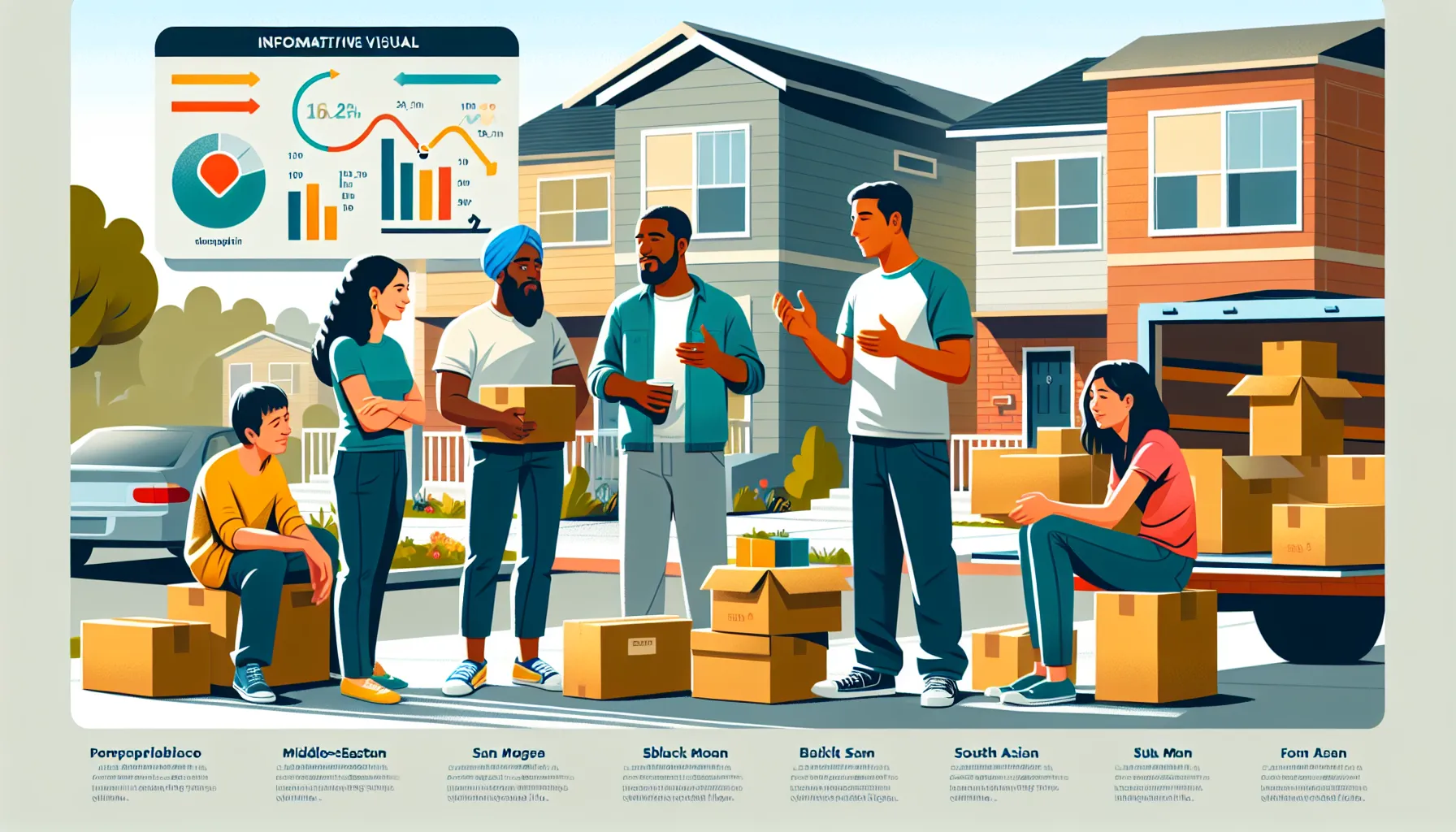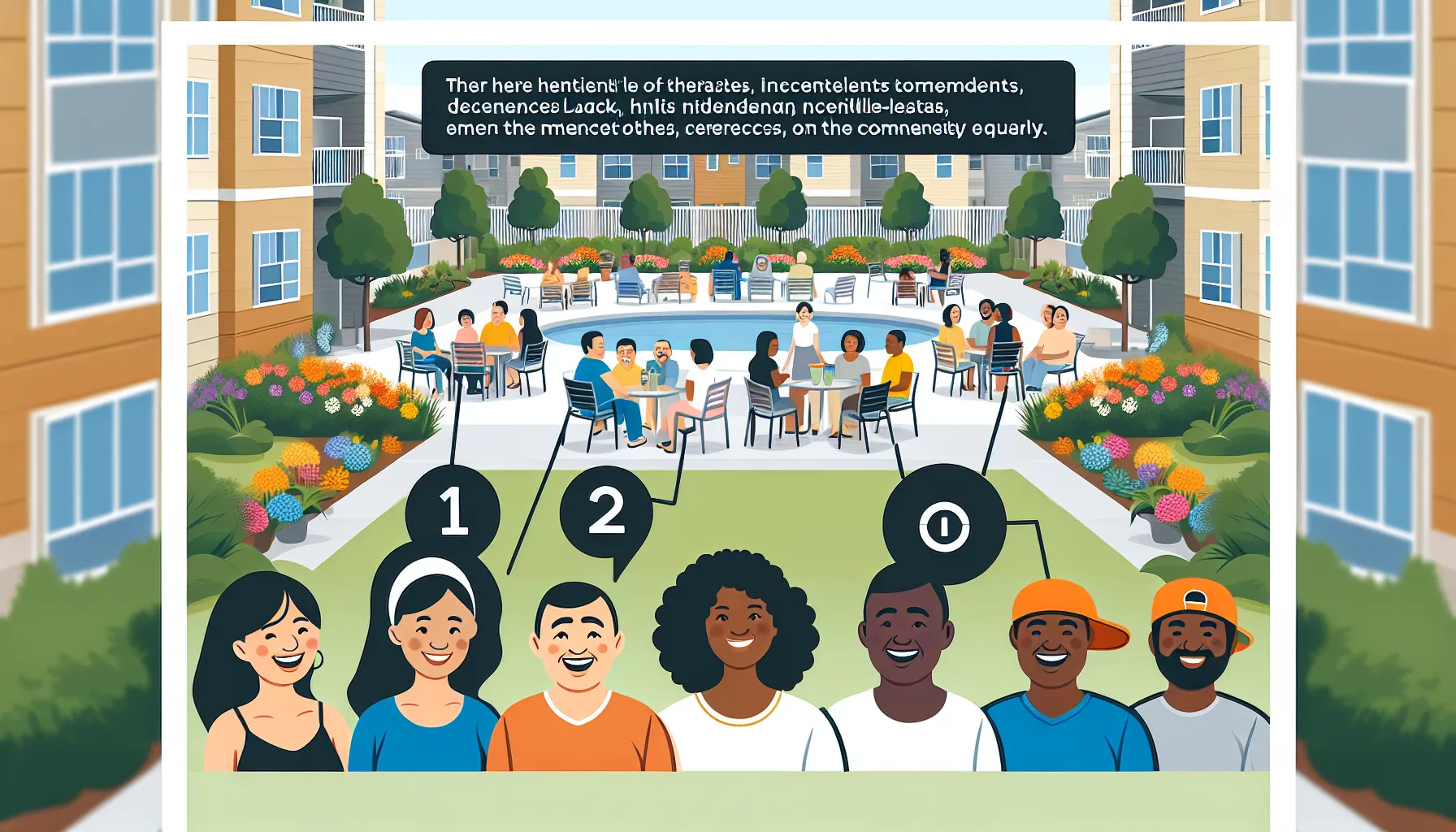Key Takeaways
- Effective unit turnover in San Mateo involves thorough inspections, timely repairs, deep cleaning, and strategic marketing to minimize vacancy periods and attract reliable tenants.
- Economic and demographic factors such as housing market trends, population shifts, and workforce dynamics significantly influence rental turnover rates in the region.
- High turnover presents challenges like community instability, strain on local services, and disruptions to small businesses, highlighting the need for sustainable solutions.
- Tenant retention strategies, such as improved policies, community engagement, and responsive property management, can reduce turnover and foster long-term relationships.
- Embracing technology and sustainability initiatives, such as smart home upgrades and energy-efficient appliances, can appeal to modern renters and enhance property value.
- Staying informed about local development trends and tenant preferences is vital to proactively adapting properties to meet evolving market demands.
Turning over a rental unit in San Mateo comes with its own set of challenges and opportunities. Whether you’re preparing a property for new tenants or addressing maintenance needs, the process can feel overwhelming without the right approach. How do you balance efficiency with maintaining the quality and appeal of your property?
Every detail matters when it comes to keeping your rental competitive in a sought-after market like San Mateo. From inspections to repairs and marketing, each step plays a role in attracting reliable tenants and maximizing returns. Are you confident your property is ready to meet the expectations of today’s renters?
By understanding the key steps involved in unit turnover, you can save time, reduce stress, and protect your investment. Let’s explore how to streamline the process while keeping your property in top shape for its next chapter.
Overview Of San Mateo Unit Turnover
Turning over a rental unit in San Mateo involves multiple steps to prepare the property for a new tenant. This process helps maintain the property’s condition and keeps it appealing in a competitive rental market. Addressing necessary repairs, conducting deep cleaning, and updating amenities where needed are crucial tasks. Each action directly impacts the property’s readiness for new occupants.
Effective inspections form the foundation of the turnover process. Assessing the unit’s condition identifies issues such as broken fixtures, safety concerns, or signs of wear and tear. Promptly resolving these items prevents delays in re-leasing the unit. Have you considered how thorough inspections could save time and reduce long-term expenses?
Repairs and improvements often follow inspections. These might include patching walls, replacing outdated appliances, or fixing plumbing issues. The aim is to boost rental value and attract potential tenants. What upgrades do you think could make your property stand out while staying cost-effective?
After repairs, deep cleaning creates a fresh and welcoming environment. Carpets, windows, and kitchens often require special attention to remove signs of previous occupancy. A clean unit appeals to tenants seeking a comfortable living space.
Marketing comes next, aiming to highlight the unit’s strengths. High-quality photos, detailed descriptions, and competitive pricing are essential to drawing interest. How strategic are your marketing efforts in reaching qualified renters quickly?
Streamlining the turnover process minimizes vacancy periods and increases return on investment. Every step, from inspection to marketing, plays a vital role in creating a smooth transition for new tenants in San Mateo.
Key Factors Driving Unit Turnover In San Mateo

Unit turnover in San Mateo is influenced by several factors that vary based on broader social, economic, and local market conditions. Understanding these drivers can help landlords prepare and adapt to changes effectively.
Economic Trends And Housing Market
Economic booms or downturns directly affect rental turnover. In San Mateo, shifts in property values, rental demand, and market competition often align with factors like interest rates and job markets. Higher rent increases can push tenants to relocate, while economic slowdowns may cause tenants to stay longer. What changes in the housing market are you observing in your area?
Population Growth And Demographics
San Mateo’s population dynamics play an integral role. Young professionals entering the rental market, families relocating for schools, or retirees downsizing influence turnover rates. Urban migration patterns or shifts in community demographics often create fluctuations. How might these shifts align with your property’s target renters?
Employment Opportunities And Relocations
The region’s workforce demand and corporate relocations contribute significantly. Expanding industries or new headquarters in surrounding areas bring an influx of renters. Conversely, job losses or company moves can increase vacancies. Are you tracking employment trends to anticipate renter needs?
Challenges Faced Due To High Turnover

High rental unit turnover in San Mateo presents several challenges for property owners, tenants, and the community. Understanding these impacts can help address the broader effects and create solutions that benefit everyone.
Impact On Community Stability
Frequent tenant changes can disrupt the sense of continuity in a neighborhood. When residents leave often, forming long-term connections becomes harder. This affects the social fabric of the community, making it feel less cohesive. Have you noticed how a stable group of neighbors fosters security and mutual support?
With consistent turnover, businesses within the area may also experience changes in customer patterns. Local shops, restaurants, and services often rely on steady patronage from the community. High turnover levels can reduce this consistency, putting strain on small businesses that depend on regular clientele. How do these fluctuations shape the character of neighborhoods in the long run?
Strain On Local Services And Infrastructure
High turnover increases demands on services like moving companies, utility providers, and city services that handle waste disposal or property inspections. Managing the logistical needs of multiple moves within a short time frame can stretch these resources. Have you considered how this might affect response times or service quality for other residents?
In addition, educational institutions and healthcare providers may face challenges as shifting populations bring fluctuating demands. For example, schools in areas with high turnover experience enrollment instability, making long-term planning difficult. These shifts are significant because they influence funding, staff demands, and overall resource allocation. What measures could improve service efficiency in these situations?
Strategies To Address Unit Turnover

Managing rental unit turnover in San Mateo requires thoughtful planning and proactive measures to minimize vacancy times and maintain property appeal. What steps can you take to reduce turnover-related challenges while keeping tenants satisfied?
Policy Changes And Affordable Housing Initiatives
Updating rental policies can significantly impact tenant retention and turnover rates. Fair regulations regarding rent adjustments, maintenance, and lease renewals create a sense of security for tenants. Flexible lease terms, such as offering longer contracts, can encourage tenants to stay longer, reducing the need for frequent turnovers. Are your current policies creating stability for your tenants, or are they leading to unnecessary stress?
Affordable housing initiatives also play a crucial role in addressing turnover. Implementing cost-effective solutions, like renewable energy options or energy-efficient appliances, can lower utility bills and indirectly enhance affordability. Offering incentives such as small rent discounts for early renewals can motivate tenants to remain in place. These approaches benefit both landlords and tenants by fostering long-term relationships.
Community Engagement And Retention Efforts
Fostering a strong sense of community can reduce turnover rates by improving tenant satisfaction. Building connections among residents—through events, forums, or communal spaces—helps create a more cohesive and welcoming environment. Are you helping tenants feel at home in your property, or does it feel like just another rental?
Investing in property management responsiveness and quality maintenance strengthens tenant trust. Promptly addressing maintenance requests and maintaining regular communication demonstrates a commitment to tenant well-being. Offering surveys or feedback forms helps uncover issues and demonstrates a willingness to improve.
Encouraging tenants to stay longer requires more than just addressing physical property needs. Are you creating a space where they feel valued and emotionally connected? Building relationships and maintaining clear, consistent communication can significantly enhance tenant retention, lowering turnover and creating more stable, satisfied communities.
Future Outlook For San Mateo Unit Turnover

San Mateo’s rental market continues to be influenced by shifting housing demands and economic trends. With rental prices fluctuating, tenant expectations are evolving rapidly. Landlords focusing on adapting to these changes can better position their properties to attract and retain long-term tenants. What steps are you taking to stay ahead of these market shifts?
Advances in technology are reshaping how properties are listed and managed. Virtual tours, digital applications, and smart home integrations are becoming more common. Embracing these tools can streamline the leasing process and appeal to tech-savvy renters. Are you leveraging technology to enhance your rental property’s appeal?
Sustainability initiatives are also gaining popularity among renters. An energy-efficient unit not only reduces utility costs but may attract tenants valuing eco-friendly living. Simple upgrades such as LED lighting or efficient appliances can make a significant impact. How can you incorporate sustainable practices into your units without significant upfront investment?
With demographic changes, including an influx of families and professionals, understanding the preferences of these groups is key. Families may prioritize access to schools, while professionals might seek nearby public transport. Knowing what tenants value most can guide enhancements to your property. What features do your prospective tenants typically look for?
Local development projects and infrastructure updates will likely shape housing trends in San Mateo. Rising job opportunities and new amenities can increase rental demand in specific areas. Staying informed about these developments can help landlords predict and prepare for changes in tenant demographics. Have you considered how new developments in your area will impact your property?
Conclusion
Navigating unit turnover in San Mateo requires a strategic approach that balances efficiency with thoughtful property management. By staying proactive and adapting to market trends, landlords can minimize vacancy periods, enhance tenant retention, and protect their investments.
Focusing on quality, community engagement, and innovative solutions not only attracts reliable renters but also fosters a stable and appealing living environment. With the right planning and attention to detail, managing rental turnover becomes an opportunity to strengthen both property value and tenant satisfaction.
Frequently Asked Questions
What is rental unit turnover in San Mateo?
Rental unit turnover refers to the process of preparing a property for new tenants after the previous ones move out. In San Mateo, this includes inspections, repairs, cleaning, and marketing to ensure the unit is ready for prospective renters in a competitive market.
Why is rental unit turnover important for landlords?
Turnovers help landlords maintain the property’s appeal and value, attract reliable tenants, and minimize vacancy periods. Efficient turnovers also protect the investment, ensuring that the property stays in good condition while aligning with local rental demands.
What are the main steps in the rental turnover process?
The main steps include property inspection to identify issues, completing necessary repairs or improvements, deep cleaning, and marketing the unit with professional photos and detailed descriptions to quickly attract qualified renters.
How can landlords reduce high turnover rates?
Landlords can reduce turnover by offering fair rent policies, flexible lease terms, and incentives like early lease renewal discounts. They should also foster tenant satisfaction through responsive property management and creating a sense of community.
What challenges come with frequent rental turnovers in San Mateo?
Frequent turnovers disrupt neighborhood stability, hinder community connections, stress local services, and increase vacancy periods. These challenges can also impact a landlord’s long-term profitability and property reputation.
How does San Mateo’s rental market influence turnover?
Economic factors like rising rents, employment opportunities, and demographic shifts—including an influx of young professionals—play a significant role in turnover dynamics within San Mateo’s rental market.
What role does cleaning play in the turnover process?
Deep cleaning is crucial to presenting a fresh and welcoming environment for new tenants. It ensures the property feels move-in ready and leaves a positive impression on prospective renters during showings.
How does marketing help reduce vacancy periods?
Effective marketing, including high-quality photos and detailed online listings, showcases the property’s strengths, attracts qualified renters quickly, and minimizes the time a unit sits vacant.
Why is community engagement important for tenant retention?
Community engagement fosters a sense of belonging among tenants, helping them feel more connected and emotionally invested. Events, shared spaces, and open communication contribute to long-term satisfaction and retention.
How can technology improve rental unit turnover?
Emerging technologies like virtual tours, smart home features, and online management tools streamline turnovers, appeal to tech-savvy tenants, and enhance efficiency for landlords in attracting and retaining renters.
